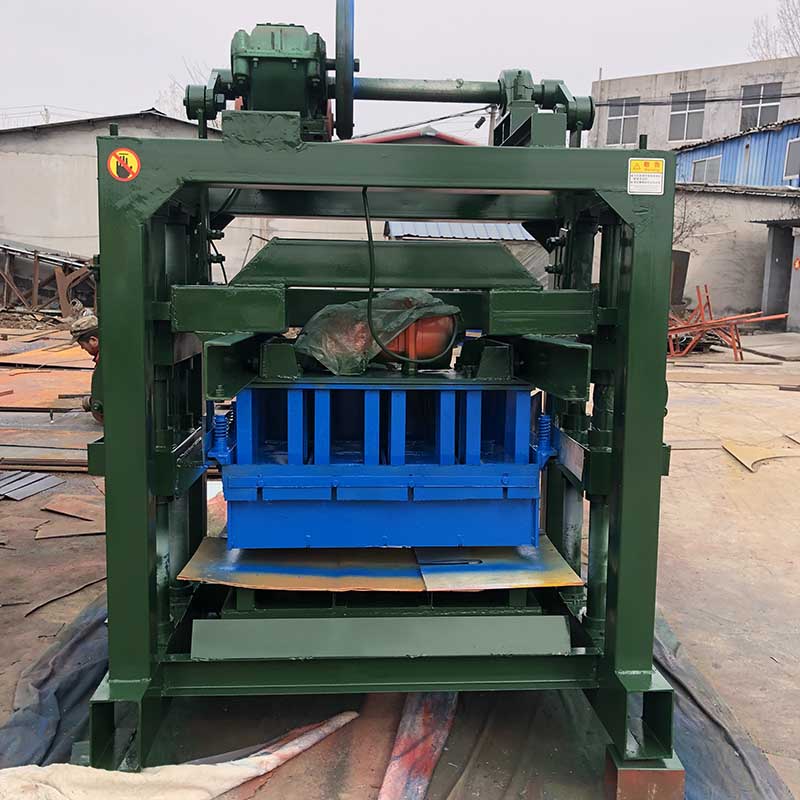
Image source:Aiwei block machine
Introduction
The construction industry is the backbone of modern society, providing the infrastructure and buildings that facilitate our daily lives. At the heart of this industry lies the production of bricks and blocks, the fundamental building blocks of construction. Cement brick machines, which automate the production of bricks and blocks, have become indispensable tools in construction projects. But what does it take to invest in these machines, and what are the potential benefits? In this comprehensive article, we will conduct a detailed cost-benefit analysis of investing in cement brick machines.
Understanding Cement Brick Machines
Before diving into the cost-benefit analysis, let’s establish a clear understanding of what cement brick machines are and what they do. Cement brick machines are industrial equipment designed to automate the process of manufacturing bricks and blocks made from cement and other materials. They come in various sizes, configurations, and levels of automation, ranging from manual and semi-automatic to fully automatic systems.
The Cost of Investing in Cement Brick Machines
Investing in cement brick machines involves several cost components, including:
1. Machine Purchase Cost
This is the upfront cost of acquiring the cement brick machine. The price can vary significantly depending on the machine’s capacity, level of automation, features, and brand reputation. Generally, fully automatic machines with advanced features are more expensive than manual or semi-automatic ones.
2. Installation and Setup
Setting up the machine in your facility, including any necessary modifications to the workspace, may incur additional costs.
3. Training and Labor
Training operators to use the machine efficiently is crucial. Labor costs are ongoing expenses associated with operating the machine.
4. Maintenance and Repairs
Like any industrial equipment, cement brick machines require regular maintenance and occasional repairs. Factoring in maintenance costs is essential for keeping the machine in optimal working condition.
5. Raw Materials
You’ll need to procure cement and other raw materials for brick production. The cost of raw materials can fluctuate based on market conditions.
6. Energy Consumption
Cement brick machines consume electricity or other forms of energy during operation. Energy costs can vary depending on machine efficiency and local energy prices.
7. Financing and Interest
If you’re financing the purchase of the machine through a loan or lease, interest payments will add to the overall cost.
The Benefits of Investing in Cement Brick Machines
Now, let’s explore the potential benefits that can result from investing in cement brick machines:
1. Increased Production Capacity
Cement brick machines automate the production process, allowing for significantly higher production capacities compared to manual methods. This increased output can meet the demands of larger construction projects.
2. Improved Quality Control
Automated machines ensure consistent brick quality, reducing variations and defects. This can lead to higher customer satisfaction and fewer rejected bricks.
3. Labor Savings
With automation, fewer laborers are needed for brick production. This can result in significant labor cost savings over time.
4. Efficiency and Speed
Cement brick machines can produce bricks at a faster rate than manual methods, reducing project timelines and increasing project efficiency.
5. Customization and Versatility
Many cement brick machines offer flexibility in producing different brick sizes and types, providing versatility for various construction needs.
6. Enhanced Sustainability
Some modern cement brick machines incorporate eco-friendly features, such as using recycled materials or reducing energy consumption, contributing to sustainable construction practices.
Conducting a Cost-Benefit Analysis
When conducting a cost-benefit analysis for investing in cement brick machines, it’s essential to consider the following steps:
1. Calculate Total Costs
Sum up all the costs associated with the investment, including the machine’s purchase price, installation, labor, maintenance, raw materials, energy, and financing costs.
2. Estimate Benefits
Estimate the benefits in terms of increased production capacity, labor savings, improved quality, and other factors that contribute to project efficiency and quality.
3. Determine Payback Period
Calculate how long it will take for the cumulative benefits to cover the initial investment costs. This payback period is a critical factor in decision-making.
4. Consider Long-Term Returns
Look beyond the payback period and consider the long-term returns on your investment. Cement brick machines can provide ongoing benefits for many years.
5. Risk Analysis
Assess potential risks that could impact the investment, such as changes in market demand, technological advancements, and regulatory changes.
Conclusion
Investing in cement brick machines can be a strategic decision for construction businesses and entrepreneurs. While there are upfront costs to consider, the potential benefits, including increased production capacity, improved quality, labor savings, and efficiency gains, can make these machines a valuable asset.
However, it’s crucial to conduct a thorough cost-benefit analysis tailored to your specific circumstances and market conditions. Consider not only the immediate costs and benefits but also the long-term returns and potential risks.
Ultimately, the decision to invest in cement brick machines should align with your business goals, construction projects, and the evolving needs of the construction industry. When approached strategically, such an investment can contribute to the success and growth of your construction endeavors.
